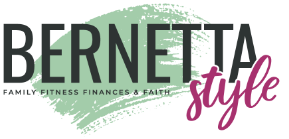BREAST CANCER AWARENESS – RISK & SYMPTOMS
October is National Breast Cancer Month. Have you had a mammogram this year? Have you had one last year or the last 5 years. I am under 40 but I did have one last year because I felt a lump. I also have had this lump for 9+ years with no symptoms, so I was pretty sure it wasn’t serious. I really wanted a Mammogram to be 100% and have peace. I am thankful that it was just a lymph node.
I am grateful that I never stop inquiring about the lump, even when the doctor said it’s probably nothing. It was something to me and finally after so many years, I had my first mammogram. It wasn’t as bad or as uncomfortable as everyone made it seem. When I have to do something for my health, I just suck it up and do what needs to be done. Many doctors don’t push for women to get mammograms before 40 but so many women are getting breast cancer before 40, that I am not sure why that law or requirement has not been updated.
While researching Breast Cancer, I have learned that Breast cancer is the most commonly diagnosed cancer and second most common cause of cancer deaths among black women. At the time of diagnosis, blacks more often present with a higher stage of cancer. Although the death rate for breast cancer has declined over the past 20 years, the rate of decline has been slower for blacks. Black women are 1.4 times more likely to die from breast cancer than white women. Compared to whites, blacks have a lower rate of cancer survival for each stage of breast cancer at diagnosis. These differences have been partially explained by differences in types of tumors and access to treatment services.
Source
Breast Cancer Signs & Symptoms
The signs and symptoms of breast cancer include:
- A lump or thickening in or near the breast or in the underarm that persists through the menstrual cycle
- A mass or lump, which may feel as small as a pea
- A change in the size, shape, or contour of the breast
- A blood-stained or clear fluid discharge from the nipple
- A change in the feel or appearance of the skin on the breast or nipple (dimpled, puckered, scaly, or inflamed)
- Redness of the skin on the breast or nipple
- An area that is distinctly different from any other area on either breast
- A marble-like hardened area under the skin
These changes may be found during a breast self-exam.
Medical organizations don’t agree on the recommendation for breast self-exams, which is an option for women starting in their 20s. Doctors should discuss the benefits and limitations of breast self-exam with their patients.
Source
Slightly Higher Risk
- Distant family history. This refers to breast cancer in more distant relatives such as aunts, grandmothers, and cousins.
- Previous abnormal breast biopsy. Women with earlier biopsies showing any of the following have a slight increased risk: fibroadenomas with complex features, hyperplasia without atypia, sclerosing adenosis, and solitary papilloma
- Age at childbirth. Having your first child after age 35 or never having children puts you at higher risk.
- Early menstruation. Your risk increases if you began menstruating before age 12.
- Late menopause. If you begin menopause after age 55, your risk increases.
- Weight. Being overweight (especially in the waist), with excess caloric and fat intake, increases your risk, especially after menopause.
- Excessive radiation. This is especially true for women who were given radiation for postpartum mastitis, received prolonged fluoroscopic X-rays for tuberculosis, or who were exposed to a large amount of radiation before age 30 — usually as treatment for cancers such as lymphoma.
- Other cancer in the family. A family history of cancer of the ovaries, cervix, uterus, or colon increases your risk.
- Heritage. Female descendents of Eastern and Central European Jews (Ashkenazi) are at increased risk.
- Alcohol. Use of alcohol is linked to increased risk of developing breast cancer. Compared with nondrinkers, women who consume one alcoholic drink a day have a very small increase in risk, and those who have 2 to 5 drinks daily have about 1.5 times the risk of women who do not drink.
- Race. Caucasian women are at a slightly higher risk of developing breast cancer than are African-American, Asian, Hispanic, and Native American women. The exception to this is African-American women, who are more likely to have breast cancer than whites under the age of 40.
- Hormone Replacement Therapy (HRT). Long-term use of combined estrogen and progesterone increases the risk of breast cancer. This risk seems to return to that of the general population after discontinuing them for five years or longer.Source
Ladies, please get check! It could save your lives!
Also, it’s a pleasure meeting all the BLOGGER Ladies (BLM) on our First BLOG HOP!





